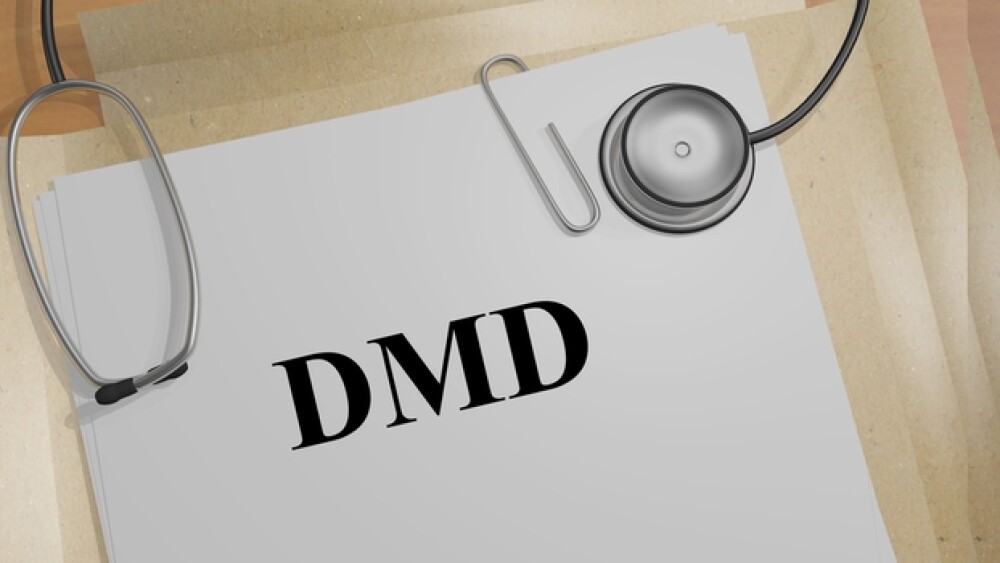The therapy demonstrated durable and statistically significant improvements in a number of efficacy endpoints measured 12 months after infusion.
Pfizer reported new Phase Ib clinical trial results from its investigational gene therapy for Duchenne muscular dystrophy (DMD).
Duchenne muscular dystrophy (DMD) is a rare muscle-wasting disease that primarily affects boys. Muscle weakness begins as early as the age of three and eventually leads to an inability to walk. The heart and respiratory muscles are also affected, typically causing premature deaths.
The Phase Ib trial of PF-06939926, Pfizer’s experimental gene therapy, showed preliminary data in nine ambulatory boys with DMD between the ages of six and 12, with a mean age of eight. The intravenous dosing of the therapy was well-tolerated and showed “encouraging efficacy and manageable safety events.”
The therapy demonstrated durable and statistically significant improvements in a number of efficacy endpoints measured 12 months after infusion. These included sustained levels of mini-dystrophin expression and improvements on the North Star Ambulatory Assessment (NSAA) rating scale.
There were three serious adverse events, two that appeared to be immune reactions related to complement activation. They were severe, but all three events fully resolved within two weeks.
“Based on the encouraging preliminary efficacy data and manageable safety event from our Phase Ib study, we believe we may have a potential breakthrough therapy for boys with Duchenne muscular dystrophy, a devastating disease for which there remains a significant medical need,” said Seng Cheng, chief scientific officer, Pfizer Rare Disease Research Unit. “We are advancing our Phase III program as quickly as possible and plan to begin dosing patients in the second half of 2020 pending regulatory approval. Our program has the potential to be the first DMD gene therapy Phase III trial start using a commercial-scale manufacturing process. If the program is successful, this manufacturing capability is expected to help position us to deliver this medicine to patients quickly following regulatory approval.”
In 2016, after significant controversy, the U.S. Food and Drug Administration (FDA) approved the first therapy for DMD, Sarepta Therapeutics’ Exondys 51 (eteplirsen). That drug was approved for patients amenable to skipping exon 51. In December 13, 2019, after initially being rejected, the FDA approved another DMD therapy from Sarepta called Vyondys 53 (golodirsen), for patients amenable to skipping exon 53.
Both drugs have a similar price tag, based on a patient’s weight, and runs about $300,000 per year, but can run up to $1 million per year. Both drugs have shown a slight increase in the muscle protein dystrophin, which is typically missing in Duchenne children. The trials for those drugs haven’t shown that the drug improves muscle function or slows disease progression.
The Sarepta technology uses “gene skipping” technology that allows the gene-reading machinery to skip over the problematic areas of the dystrophin gene and produce a truncated version of the protein.
In January 2020, researchers at Technical University of Munich (TUM) developed a gene therapy with a potential to cure DMD. This is generally believed to be difficult or impossible, largely because of the size of the dystrophin gene. The dystrophin gene codes for muscle—mutations in the gene result in DMD. It is also the largest gene in the human genome, which means that traditional viral vectors used to deliver gene therapies are not large enough to hold the complete gene. The Munich group used a modified CRISPR-Cas9 gene editing technique to make the gene readable to the protein-manufacturing machinery in the cells. The new dystrophin gene was still shorter than the normal dystrophin gene, but was able to stably form dystrophin protein, which in laboratory animals, improved muscle function.
Pfizer’s gene therapy uses a recombinant adeno-associated virus serotype 9 (AAV9) capsid that carries a shortened version of the dystrophin gene (mini-dystrophin) that is controlled by a human muscle-specific promotor.





